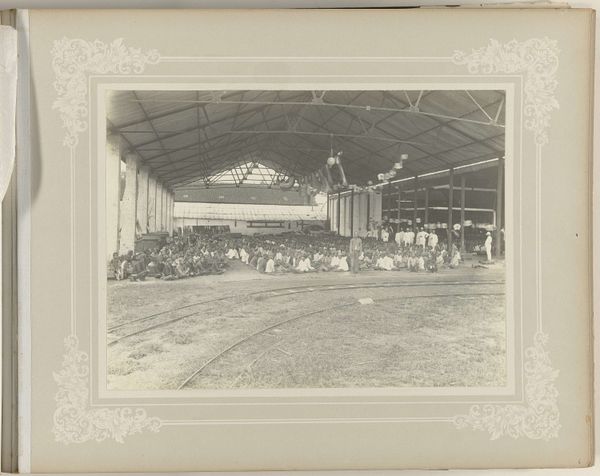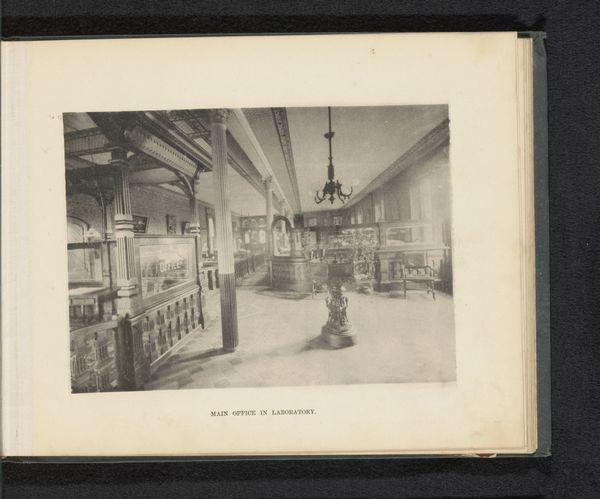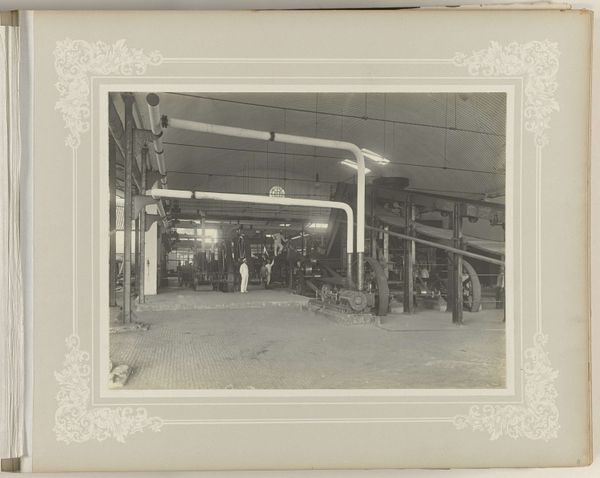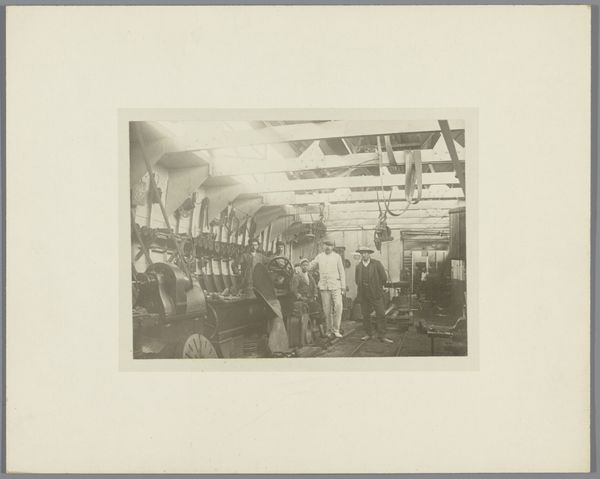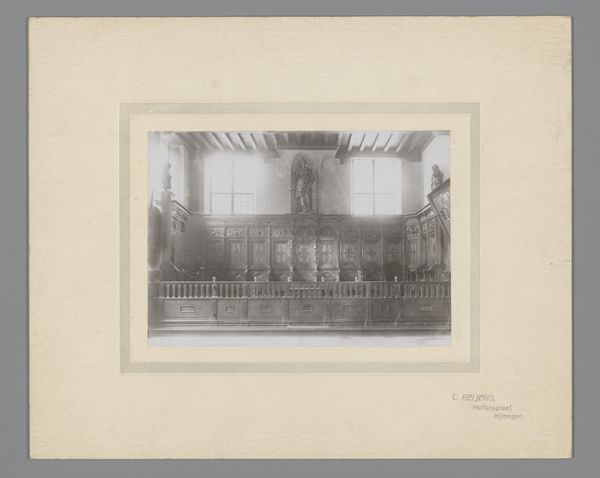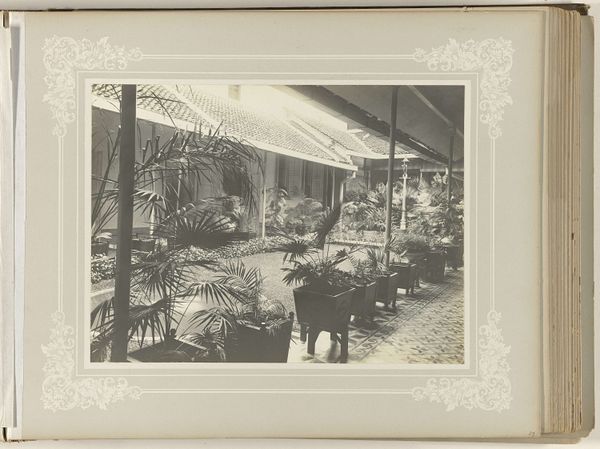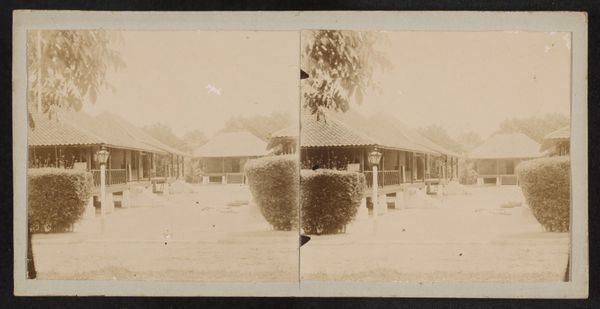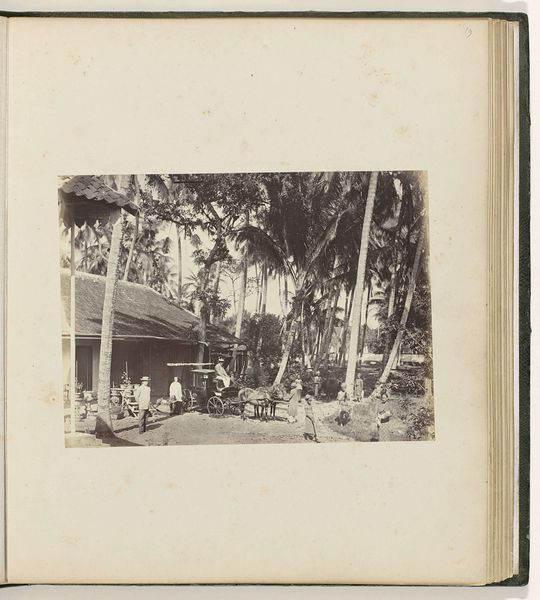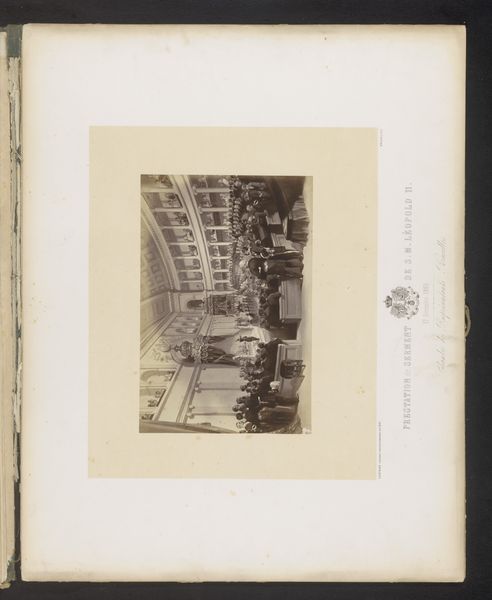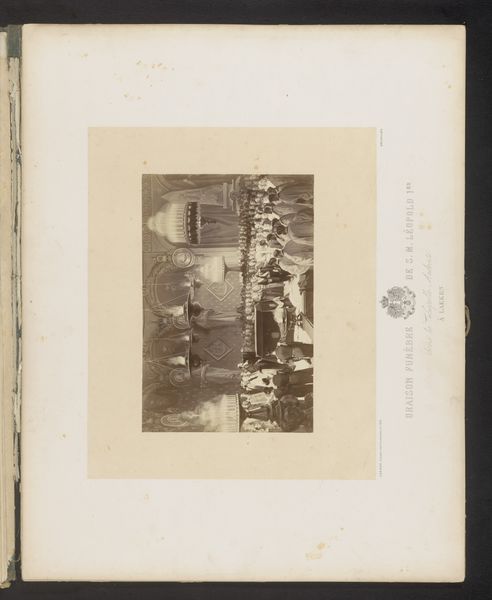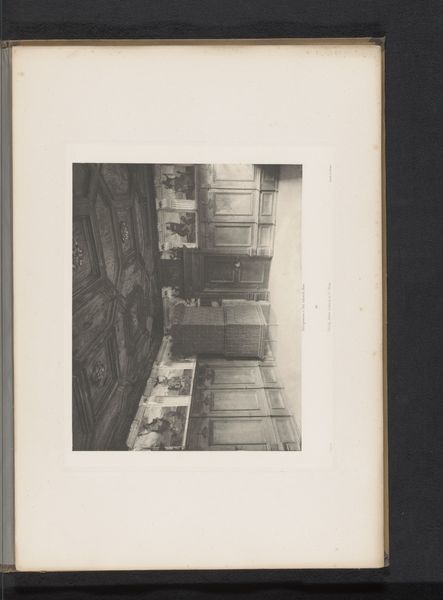
Dimensions: height 230 mm, width 170 mm
Copyright: Rijks Museum: Open Domain
Editor: This photograph, titled "Vlechterij" and created between 1890 and 1910 by Otto Hisgen, is a gelatin-silver print. It's so interesting how the shadows create these strong diagonal lines, almost bisecting the image. What compositional elements stand out to you? Curator: The architectural space, though rudimentary in construction, yields a complex interplay of line and form. Observe how the linear arrangement of the supporting posts creates a rhythmic cadence, countered by the radial symmetry of the wheel-like structure. This opposition is central to the work's internal logic. Editor: That's a fascinating perspective. I hadn't really focused on the radial symmetry before. It draws my eyes into the frame more now. Do you see the photograph's greyscale palette as crucial to its composition? Curator: Indeed. The restricted tonal range, typical of gelatin-silver prints of that era, concentrates our gaze on the subtle modulations of light and shadow. The photographer employs light not just as illumination but as a plastic element, modeling form and defining spatial relationships. Are the textural differences evident to you? Editor: Yes, absolutely. The roughness of the thatched roof is a stark contrast to the smoother, almost metallic sheen on some of the woven objects. Curator: Precisely. The photograph’s value doesn’t reside in documenting a specific event but rather in exploring the intrinsic qualities of light, texture, and form, making the mundane into a subject worthy of contemplation. Editor: That really sheds a different light on the whole image for me – focusing on how the tones and structures work together, and not only on the "what" of the picture. Curator: Precisely. Considering those formal elements yields insight into a compelling artistic work.
Comments
No comments
Be the first to comment and join the conversation on the ultimate creative platform.
